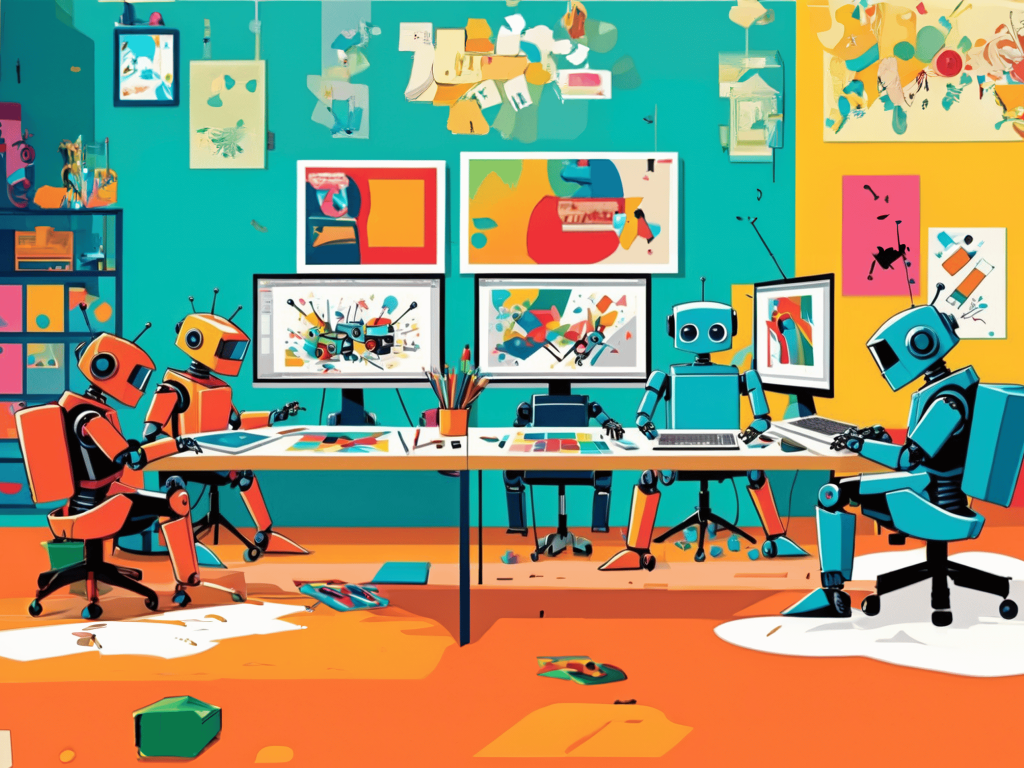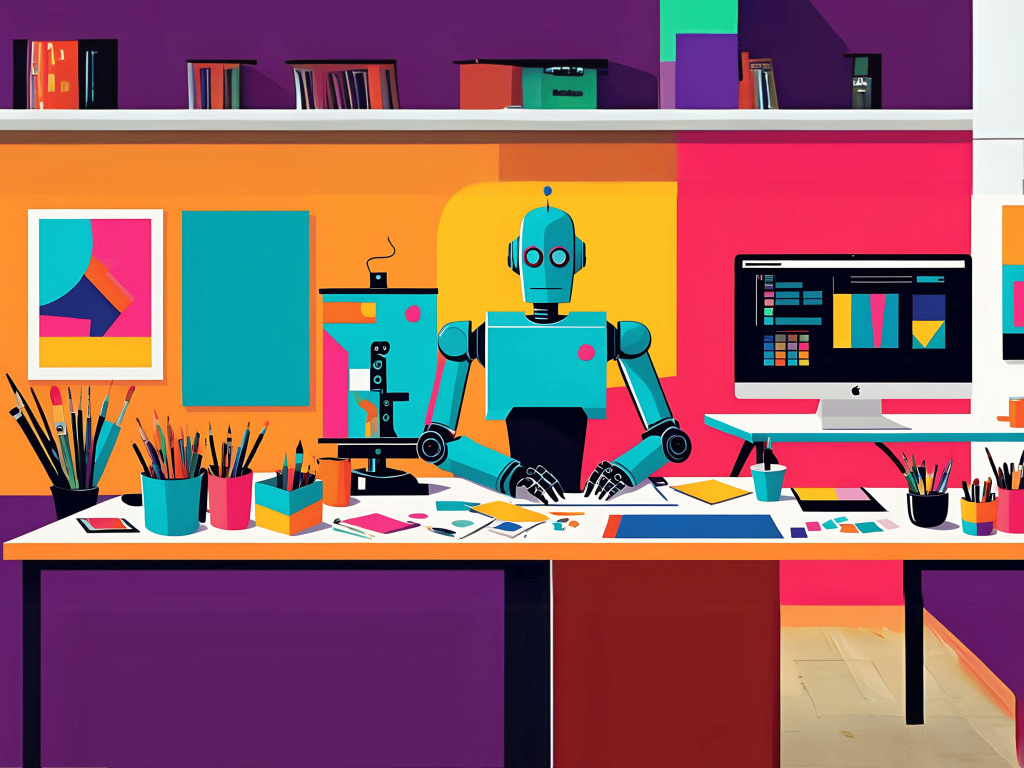
AI’s Impact on the Future of Design
I get this question quite a bit—from friends, students, and even parents! It’s a genuine concern. Ever since ChatGPT made its debut, its popularity exploded, and everyone talked about how useful it is. Then came MidJourney, which can turn prompts into beautiful artwork. Suddenly, people, even not from a design background, were sharing AI-generated artwork on social media. It seems that AI has enabled people to do things they couldn’t do before. But is it really an enabler?
I’ll admit, I’m using ChatGPT to co-write this article. Without it, I probably would’ve delayed it or not done it at all.
My background is in computer science, but I worked in interactive and creative media before coming to academia. I don’t fancy writing that much. Naturally, if you don’t like doing a particular thing, you most likely prefer to engage in it as little as possible, and eventually, you avoid getting involved with it altogether. But with ChatGPT, the dread of writing is lessened. I am able to throw some of my thoughts into the prompt, and presto! in just a few seconds, It generates the outlines and will even write the whole article if requested. I know many of you can relate. But what does this mean for writers? Or designers? Will AI push creatives out of the picture?
Supercharging Generalists and T-Shaped Designers
The World Economic Forum (WEF) reports point to the rising need for versatile skill sets in the workplace. If you’re a designer who knows a little about a lot (a generalist) or are deeply skilled in one area but have broad knowledge in others (a T-shaped designer), you’re already valuable. Throw AI into the mix, and you’re supercharged! As AI takes over more routine tasks, there is a growing emphasis on developing skills that enable workers to navigate new technologies and adapt to changing roles in the workforce. This shift aligns well with generalist, or T-shaped designers whose skillsets blend both creative and technical abilities. For designers, these technical skills often include familiarity with essential design software, prototyping tools, and basic web development principles. AI gives designers quick access to extended knowledge at any time, strengthening their versatility and enabling more innovative and impactful results.
Meet ChatGPT: A Tool for Brainstorming
Nielsen-Norman Group mentioned that In UX and design, AI is being used for brainstorming and ideation, offering helpful guides and suggestions. We’ve all been there, staring at a blank page, not sure where to start. The pressure builds, and suddenly, that creative spark feels a million miles away. Enter ChatGPT. These tools aren’t here to take over; they’re here to help you get started.
While AI can help kickstart creative work, it’s not yet advanced enough to handle complex design tasks on its own.
Evaluations show that design-specific AI tools often fall short when it comes to precision and usability in end-to-end workflows. So AI can serve as a useful partner in the early stages, but the fine-tuned, detailed work still falls on the designer.
Farewell to the Grind
Let’s be honest—not every part of design work is fun. The World Economic Forum’s Future Jobs report notes that as automation becomes more prevalent across industries, many repetitive tasks are increasingly being handled by AI. This definitely extends to creative fields, where tasks like image editing or layout adjustments are also becoming automated. Do you remember painstakingly removing backgrounds pixel by pixel? I do. Now AI tools can do it in one click. Does anyone really care how it’s accomplished? If there’s a tool to do it quickly and efficiently, why not use it? Before AI, these were the tasks we normally gave to junior designers or interns (sorry!). But there’s a downside. Many of the “easy” tasks we used to charge clients for—like basic photo edits, simple logos, or tweaking designs—might not be available anymore. Whether it’s creating social media banners or resizing images, clients now use AI themselves instead of hiring a designer. The tasks that once brought in steady income for designers, especially freelancers, are becoming automated and commodified.
So while AI frees us from the grind, it also means some billable tasks are slipping away. The trade-off is clear: designers need to shift toward offering more advanced, strategic services.
AI can handle repetitive, template-based jobs, but clients will still need us for the bigger projects—brand identities, creative direction, and solving complex design problems—where creativity, human insight, and problem-solving come into play. That’s where we’ll continue to bring value—by doing what AI can’t.
AI as a Co-Pilot, Not the Pilot
While the Top 10 Tech 2024 report and Jobs of Tomorrow report highlight AI’s potential to enhance productivity across industries, it does not imply that AI will replace human judgment and creativity. Successful projects aren’t just about having all the right ingredients; it’s about knowing how to put them together. That’s where human intuition and experience come into play. AI does not replace learning: it will not magically transform you into a professional when you do not know something. You still need to put in the time into understanding the basics, but once you have the foundation, it can help you take things to the next level, making you even better at what you do.
The Power of Originality
No matter how advanced AI becomes, there’s one thing it can’t replicate—the unique touch of human creativity. AI might generate images quickly, but it often lacks the subtlety and originality of human intuition and experience. Original designs created by humans will only gain more value in a world filled with AI-generated content. People can tell the difference between something crafted by a person and something created by an algorithm. No doubt that there will be changes on how designers obtain their design elements for sure. For example, instead of going for stock images, designers might use AI-generated images as their design elements. But the overall vision, composition, narrative, the je ne sais quoi that makes a design truly stand out will still come from the human mind.
Interestingly, while some photographers may feel threatened by AI, I’ve noticed that those with a strong foundation in photography are actually using AI to their advantage. A few of my photographer friends have started generating photos using AI, and because of their knowledge in composition and lighting, they can give better instructions to the AI, resulting in superior outputs.
It shows that human skill still plays a huge role in producing quality work, even with AI tools.
The Need for Balance
AI offers a lot of potential, but over-reliance on it could dull our human sensibilities and skills. It’s tempting to offload work to AI but as we delegate more to AI, there’s a danger of becoming passive observers rather than active creators. Mastering knowledge and skills is still crucial. Creation is a process of solving problems, experimenting, and learning. While AI helps us focus on what we enjoy, we need to ensure we don’t become too detached from the process. The future of design will be humans working together with AI, but the balance is up to us to control.
Ethical Concerns
Another crucial issue with AI-generated designs is intellectual property. AI learns from huge datasets of existing images, which may include copyrighted works. This raises questions about authorship. Who owns AI-generated designs? Are they truly original or derived from others’ work? When AI churns out art at such a scale and speed, human-made art may be devalued, and artists may struggle to have their work acknowledged. Designers need to navigate this ethical grey area carefully, ensuring that AI-generated work respects intellectual property rights and maintains the value of authentic human creativity.
Will AI Replace Designers?
And now, to answer the ultimate question: will AI replace designers?
Yes, AI is growing and evolving in its capabilities, and yes, it is beginning to take over some tasks already. However, no, it will never replace the unique human attributes of creativity and design.
What it does is augment our capabilities, helping us work smarter and faster, not harder. It’s easy to be impressed by YouTube demos of AI image generation, but when you use it in real design work, you often spend hours just to get something usable. It might not even fully match your vision. The uniqueness and authenticity of human-made designs will become even more valuable as AI-generated content grows. However, if designers don’t continue to build strong foundational skills, their work could struggle to stand out in a market increasingly filled with AI creations. In that case, they might not just be competing with AI, but also with other designers who have mastered these same essential skills.
